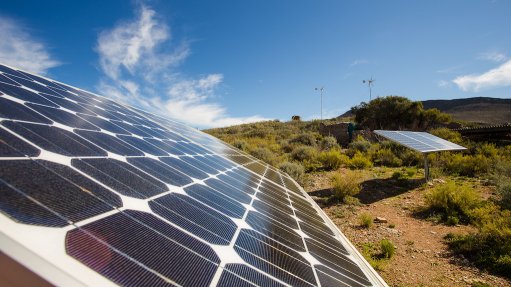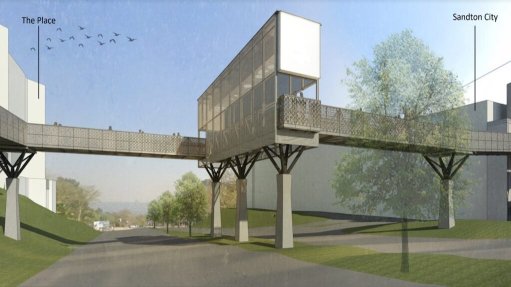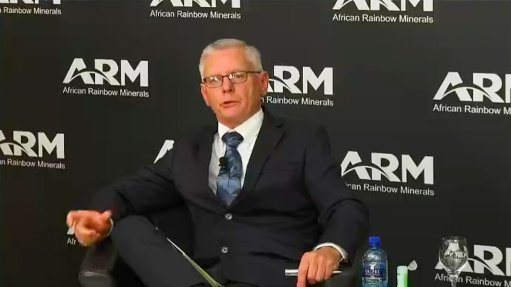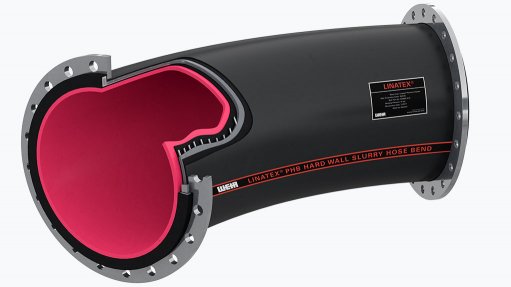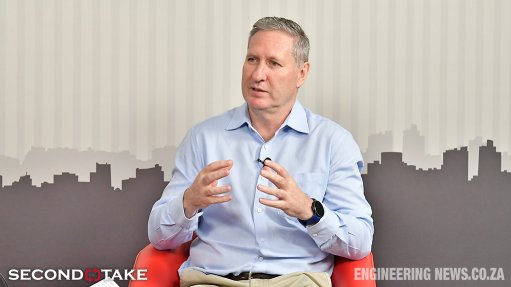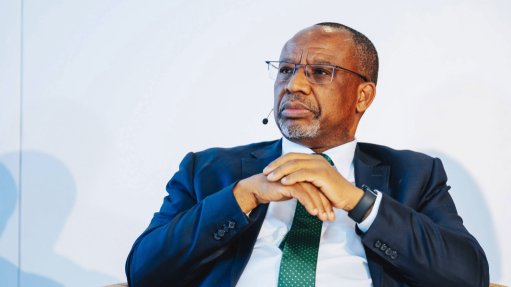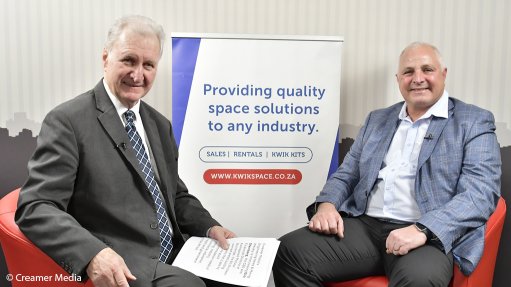Africa’s construction crossroads: How strategic risk management is unlocking investment in infrastructure
This article has been supplied and will be available for a limited time only on this website.
By: Odett Van Jaarsveld - Construction Practice Leader (Africa) Marsh
The global economy stands on the foundations laid by construction. From the roads that connect our cities to the power lines that light our homes, the roofs that shelter us, the ports that power trade and the infrastructure that gets food to our plates – every sector depends on what this industry builds.
Contributing 13% to global GDP and employing nearly 8% of the world’s workforce, construction doesn’t just support economies; it enables them to grow, adapt, and endure. Its impact also carries multiplier effects that ripple through manufacturing, finance, energy, and beyond.
That’s why when building costs spike, linked supply chains falter, or financing dries up, the effects reverberate far beyond any single project.
Two recent Marsh reports offer insight into the state of the global construction sector: the 2025 Construction Risk Report and the 2024 Construction Market Update.
Based on an analysis of financial disclosures from 70 of the world’s largest contractors and survey responses from over 230 firms across all major regions, the report traces how risk priorities have changed since 2019.
More than 28% of respondents cited inflation and economic volatility as their biggest business risk, followed by rising material costs (16%), contractual and bidding risks (13%), and talent shortages (11%). Supply chain disruptions (9%) and cyber threats (6%) were flagged as growing concerns, alongside ongoing issues related to regulation, insurance, environmental risk, and health and safety. Together, the findings reveal an industry grappling with persistent pressures and emerging threats, requiring sharper, proactive risk management.
When asked how they’re adapting to rising risk pressures, construction firms highlighted strengthening relationships with suppliers and subcontractors to share risk (39%), negotiating more robust contract terms to shift risk responsibility (34%), and setting aside larger contingency budgets to absorb unforeseen costs (31%).
The stakes are high – and so is the opportunity.
Back to the drawing board
Across the world, construction is under pressure from rising costs, tighter risk appetites, and unpredictable economic pressures.
What has changed is how risk is being approached: earlier, more deliberately, and with better data. Risk has shifted from an afterthought to a core part of project design and financing.
Across every region, projects are under greater scrutiny – not just by regulators and lenders, but by insurers too. With margins shrinking, timelines slipping, supply chains under strain, and liability standards shifting, insurance is a deciding factor in whether a project moves forward or grinds to a halt.
In countries like South Africa, where infrastructure investment is key to economic growth, projects must be smarter, better structured, and designed with risk in mind from the start. Strategic risk management is what turns plans into completed projects.
That shift is already under way. Ahead of the 2025 Sustainable Infrastructure Development Symposium South Africa, the government reaffirmed its commitment to infrastructure-led growth, with over 200 funded projects ready to go to market and R600 million allocated to improve project preparation.
It’s a signal of deliberate reform – toward better planning, faster procurement, and ultimately, more bankable infrastructure. But attracting private investment at scale will require more than intent: projects must meet increasingly high standards for financial, legal, and operational readiness, especially when it comes to insurability and long-term resilience.
A growing number of projects now hinge on whether they are insurable. Insurers want detailed technical information and early engagement. Developers are responding with more robust documentation and proactive engagement with brokers and underwriters. As a result, the industry is beginning to build risk-smart projects, not just ambitious ones.
Trends
One clear trend is the increased uptake of specialist insurance products that reflect a more sophisticated risk environment. Demand for LEG 3 cover (London Engineering Group 3 cover providing the broadest level of cover for damage caused by defective design, workmanship, or materials) has increased across large real estate, power, and petrochemical projects, shows the Construction Market Update 2025.
While LEG 2 is still more common, especially where complex or novel elements are involved, insurers are now more open to LEG 3 on the right risks, supported by detailed due diligence.
Single Project Professional Indemnity (SPPI) cover is also gaining traction. In South Africa, SPPI rates began the year relatively stable but climbed sharply by mid-2024. Coverage is often structured with low limits and conservative terms, with sub-limits and exclusions for high-risk services such as geotechnical engineering. While employers typically take out the cover, it is increasingly being passed down to contractors and professionals. Some insurers have also reduced capacity or moved to co-insurance, reflecting caution amid rising claims and cost pressures.
Delay in Start-Up (DSU) cover, often required by lenders, is facing similar constraints. Rates can be as much as 2.5 times higher than property damage premiums, and underwriters are demanding comprehensive DSU monitoring and controls before committing to large exposures.
Surety markets are under strain as well. In South Africa, flat growth in 2024 conceals deeper issues: balance sheets have weakened, payment delays are more common, and underwriters have become cautious. As a result, it’s become harder for smaller firms to secure the guarantees needed to bid for or scale up on large projects. Even larger contractors now face longer lead times and more rigorous documentation requirements.
Hotting up
Climate is a significant construction risk, not just an environmental one. Contractors report rising costs linked to decarbonisation, extreme weather, and climate-related delays, flagging climate and sustainability as their top concerns – a figure that has nearly doubled since 2019. In South Africa, climate data is now being factored into design decisions, scheduling, and even insurance pricing. Yet adoption of formal climate risk strategies remains limited, pointing to a gap between awareness and preparedness.
To build resilience, developers and governments are taking steps to embed risk earlier in the project lifecycle. That includes conducting more rigorous prequalification of subcontractors, insisting on clear design liability allocation, and negotiating smarter contract terms that anticipate delays or overruns. Larger firms are now using data-driven pricing models, drawing on historical claims, local market insights, and real-time assessments.
In South Africa, the public infrastructure programme has struggled to scale due to both funding and execution gaps. Insurers are wary of projects with limited contingency or weak governance. That’s pushing more developers to engage early with specialist risk advisors to demonstrate project bankability to lenders and investors.
Cyber risk is another growing concern. With digital systems and cloud-based platforms now standard on most construction sites, attacks are increasing. South Africa saw modest cyber insurance premium increases in 2024, while the rest of the IMEA region saw steep drops due to new capacity, which highlights the importance of risk controls and cyber hygiene.
Despite the challenges, Africa’s infrastructure needs are immense – and growing. Unlocking the capital required to meet that demand will depend not just on ambition, but on delivery. That means de-risking projects from the outset, using sharper data, earlier engagement, and smarter insurance strategies to turn grand designs into viable infrastructure.
Comments
Press Office
Announcements
What's On
Subscribe to improve your user experience...
Option 1 (equivalent of R125 a month):
Receive a weekly copy of Creamer Media's Engineering News & Mining Weekly magazine
(print copy for those in South Africa and e-magazine for those outside of South Africa)
Receive daily email newsletters
Access to full search results
Access archive of magazine back copies
Access to Projects in Progress
Access to ONE Research Report of your choice in PDF format
Option 2 (equivalent of R375 a month):
All benefits from Option 1
PLUS
Access to Creamer Media's Research Channel Africa for ALL Research Reports, in PDF format, on various industrial and mining sectors
including Electricity; Water; Energy Transition; Hydrogen; Roads, Rail and Ports; Coal; Gold; Platinum; Battery Metals; etc.
Already a subscriber?
Forgotten your password?
Receive weekly copy of Creamer Media's Engineering News & Mining Weekly magazine (print copy for those in South Africa and e-magazine for those outside of South Africa)
➕
Recieve daily email newsletters
➕
Access to full search results
➕
Access archive of magazine back copies
➕
Access to Projects in Progress
➕
Access to ONE Research Report of your choice in PDF format
RESEARCH CHANNEL AFRICA
R4500 (equivalent of R375 a month)
SUBSCRIBEAll benefits from Option 1
➕
Access to Creamer Media's Research Channel Africa for ALL Research Reports on various industrial and mining sectors, in PDF format, including on:
Electricity
➕
Water
➕
Energy Transition
➕
Hydrogen
➕
Roads, Rail and Ports
➕
Coal
➕
Gold
➕
Platinum
➕
Battery Metals
➕
etc.
Receive all benefits from Option 1 or Option 2 delivered to numerous people at your company
➕
Multiple User names and Passwords for simultaneous log-ins
➕
Intranet integration access to all in your organisation









